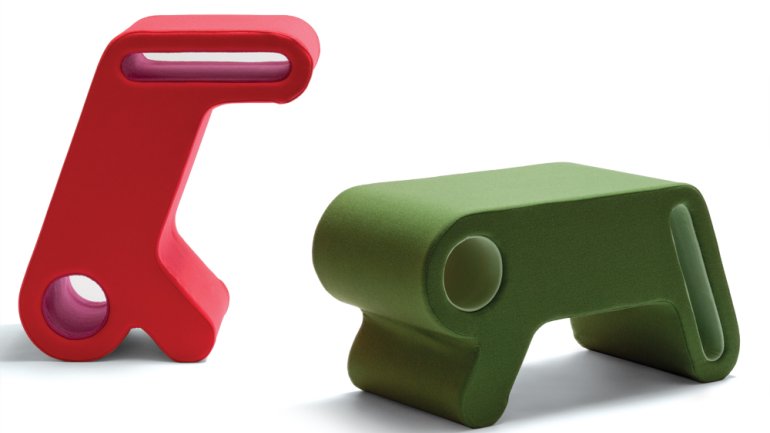Fresh Impression
Fresh Impression
We could have taken several paths with this issue’s cover story on furniture. We could have surveyed women furniture makers or mid-career furniture makers or emerging furniture makers – or any number of other permutations.
Instead we decided to highlight examples of innovative furniture and the talented people who make it – some women, some mid-career, some emerging, as it turns out. We looked at tons of furniture over several weeks, and the pieces that stayed with us were unusual in some sense. You may see echoes of another time in the fresh furniture you’ll find, but something about each piece is novel. Something is surprising. The makers behind the pieces are thinking beyond the basics of furniture design.
Not that the basics are anything to scoff at. Making furniture – any furniture – is uniquely challenging because of the demands of human scale. “Furniture is the most human of objects,” says Tim Karoleff, one of the makers we talked to for our story. “There are very rigid, objective parameters regarding ergonomic usability,” he says. A chair, a table, a desk: These pieces are meant to be used by real people, with physical bodies, and if any of the proportions are off, the furniture simply doesn’t work. It’s fatally flawed.
Not many craft forms require the sort of precise engineering that furniture demands. If you’re making a container for coffee, both a dainty teacup and a sturdy oversized mug fill the bill. If you’re making a sculpture, it can have impact whether it’s 52 inches high or 62. If you’re making earrings, they can be as appealing dangling 1 inch as they are at 2 inches. For many forms, proportions are forgiving; dimensions are malleable.
But when it comes to furniture, fractions of inches can make all the difference. Good mechanics are simply the price of admission. A chair that won’t support body weight is not really a chair. A table that tilts fails at its most fundamental function. The way the body works, the immutable needs of day-to-day living: These are limitations that all furniture makers must respect.
And few objects in our lives are more essential. “Because of that human sense of scale and the importance of daily use,” maker François Chambard says, “furniture becomes a crucial element in our lives.” Even the poorest among us have it; the most modest household has a place to sit, a surface on which to put a plate, a spot to lay one’s head. Our earliest forebears dragged rocks into the cave to serve as stools and pelts to use as beds. Furniture, in some form, is as old, as primordial, as humankind.
The furniture makers we talked to love creating objects that play such fundamental roles in our lives. We hope you’ll love reading about them and seeing their work.

